I must confess that I am no history/architecture buff. But these amazing facts about Jodhpur held my attention – which is really not an easy task.
Jodhpur is the second largest city in Rajasthan (after Jaipur) and was founded in 1459 by Rao Jodha who was the Rathore ruler of the Marwar kingdom.
The old city of Jodhpur is based around the Mehrangarh fort also known as Jodhpur fort.
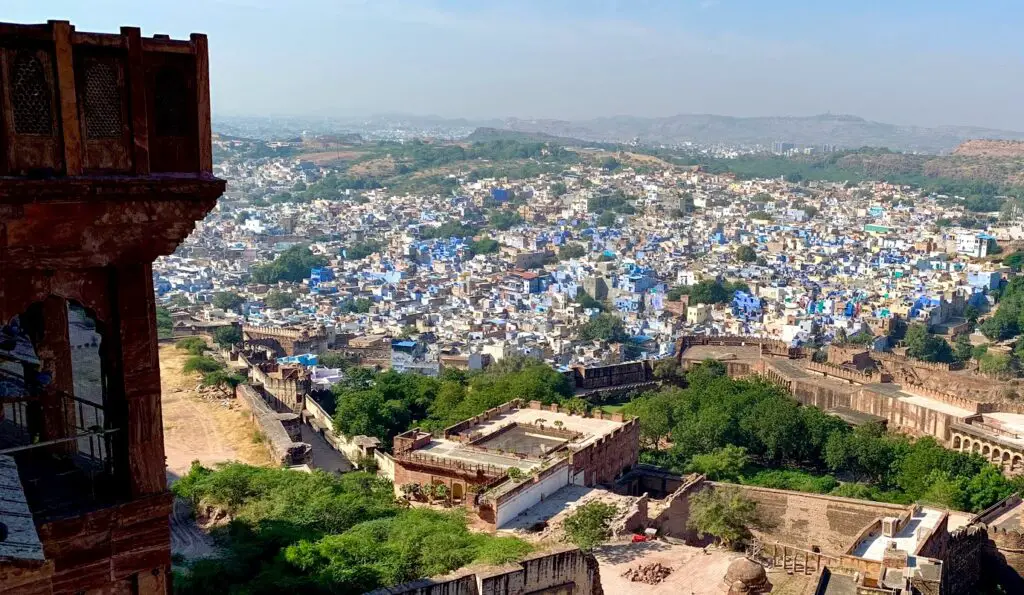
Contents
The Legend of the Jodhpur Curse
As per local legends, a hermit named Cheeria Nathji (the lord of birds) who used to live on the hill where the fort is built, was ousted by Rao Jodha. Following this, he cursed the entire kingdom with water scarcity.
This is the reason why some of the residents still believe that they face drought-like situations every three to four years despite getting some rain.
Of this mythical story, the birds still remain. These are the black kites and they are such an integral part of Mehrangarh fort that they also feature on the royal Jodhpur flag.
Remedies Taken to Ward off This Curse
In order to please the hermit, Rao Jodha built him another accommodation and a temple nearby and begged for his forgiveness.
Pleased, however, unable to take his curse back, the hermit presented a solution to neutralise the curse – someone from the kingdom had to willfully lay down his life by getting buried alive in the foundation of the fort.
A local man ‘Rajaram Meghwal’ volunteered to sacrifice himself. As a gesture, he was honoured with the title of ‘Amar Shahid’ and a plaque was dedicated to him at the site where he was buried.
His descendants, were taken care of by Rao Jodha’s family.
Also Read:
The Sheer Size of the Fort
This fort is situated on a hill named Bakhurcheeria which is 400 feet high above the town of Jodhpur and is spread over 5 km. The walls of Mehrangarh are about 35 m high and 21 m wide.
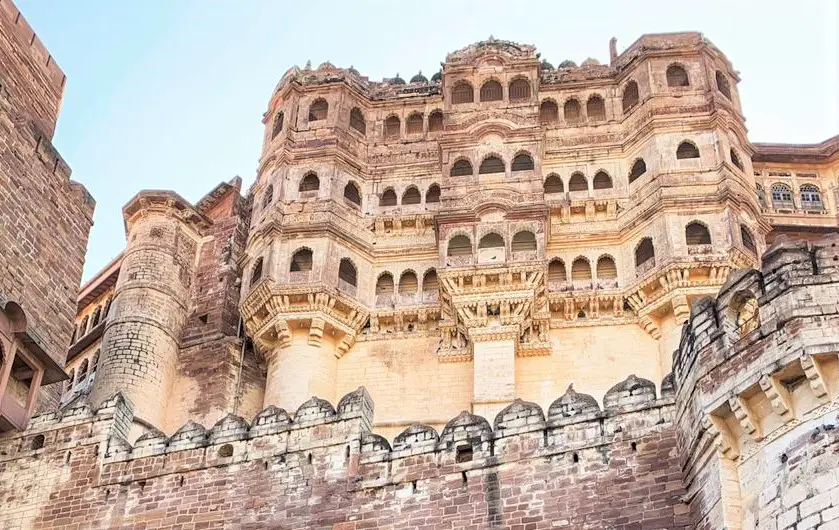
Site of the Fort: Volcanic Hill
It is said that a massive volcano once erupted here. Its eruption sent super-heated clouds of ash high up into the sky and when the ashes settled down, they formed the hill on which Mehrangarh fort is built.
Due to this unique feature, the site was declared as a National Geological Monument by the Geological Survey of India.
This volcanic rock of Aravalli range (also known as malani igneous suite) is known to be the last phase of igneous activity of the Precambrian age in this part of the world.
Naming of Mehrangarh Fort
The sun was known to be the chief deity of the Rathore dynasty. In order to show respect to their deity, they named the fort as ‘Mehr-Garh’ where Mehr refers to the sun and Garh refers to the fort.
Due to the nuances of pronunciation in the local language, this fort came to be known as ‘Mehrangarh’
Movies Shot at Mehrangarh Fort
Remember the famous prison scene from ‘Dark Knight Rises’?
Yes, the backdrop once he manages to escape the prison is that of the Mehrangarh fort.
Other movies shot here include:
- Hum Saath Saath hain – the famous ‘maare hiwade mein naache mor‘ song
- Jodha Akbar
- Thugs of Hindostan
- Jungle book
Also Read:
Timeline for Completion of the Fort: 500 Years

Although this fort was originally constructed in the 15th century by Rao Jodha, many palaces and structures present in the fort were added by his descendants.
This gigantic fort was nearly constructed across 500 years by expanding it and adding some more attractions to it. The present fort we now see was mostly built by Maharaja Ajit Singh in the 17th century.
Ancient Volcanic Rock
The ‘Rao Jodha Desert Park’ is located near the Mehrangarh fort and consists of many volcanic rocks and sandstone formations that were formed nearly 600 million years back.
This park was constructed in 2006 to try and restore the natural ecology of a large, rocky wasteland. This area had suffered years of neglect and was invaded by Prossopis juliflora (aka baavlia) which is a thorny shrub.
The eradication was finally done with the help of miners and the same pits were then used to plant the grow the new plants.
Handprints of Queens who Committed Sati
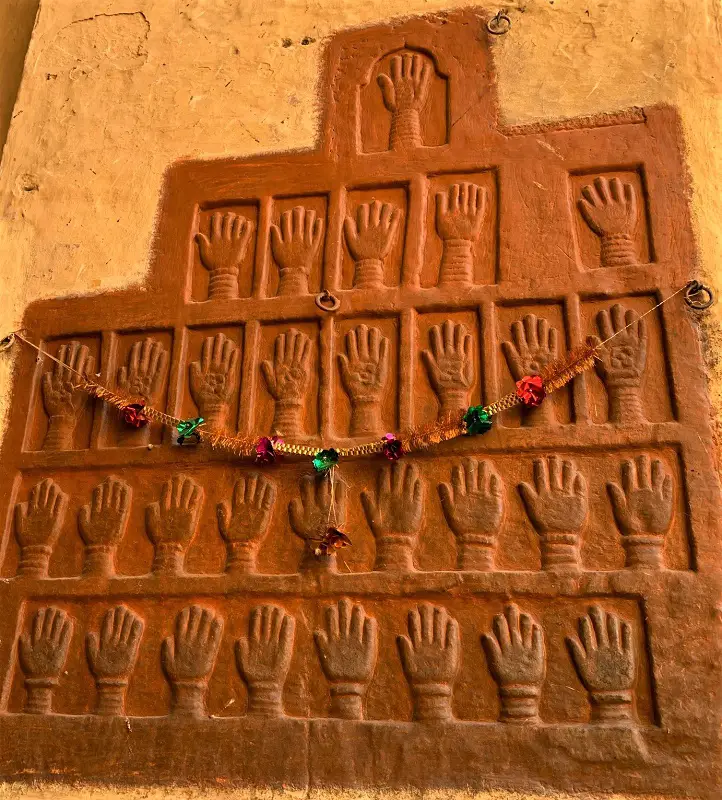
The ritual of Sati was widely practiced in the Rajasthan area of India.
One of the practices followed by the queens was to coat their hands in paint, press it on to the wall and then jump into the funeral pyre of their husband. This was done to show their devotion to their husbands.
After the death of Maharaja Man Singh, his 15 queens jumped into the fire after leaving their prints which can now be seen on the innermost gate of the fort ‘Loha Pol’. There are a total of 31 handprints at this gate.
This practice was officially condemned by the Indian government in 1987 when they passed the Commission of Sati (Prevention) Act.
Pre-Rao Jodha’s Takeover History of Jodhpur
Much before Rao Jodha founded Jodhpur, the town was believed to be occupied by ‘Abhiras’.
Why is Jodhpur Referred to as the Blue City?
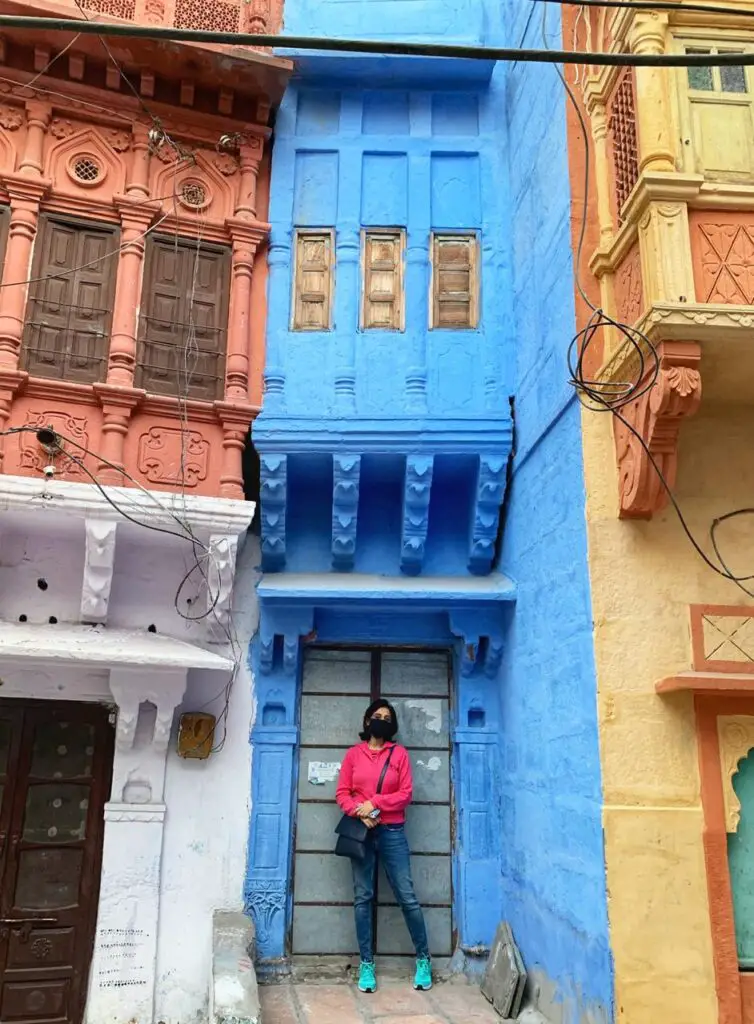
During ancient times, the blue colour denoted the caste system. This colour was also associated with Lord Shiva of whom many Brahmins are followers.
A number of houses in the old area of Jodhpur city were coloured blue to distinguish between the Brahmins and other castes and to portray the superiority of Brahmins.
Later, however, every house was painted in the same hue just to give the message of equality.
As an added plus, it helps to cool down the houses during the scorching summers of Jodhpur when the maximum temperature reaches up to 50 degree celsius.
Another theory is that the blue colour keeps the termites away.
You can take your pick on the reason.
The old city of Jodhpur is situated around the Mehrangarh fort and there was a time when the view from fort showed a sea of blue houses.
Not anymore.
Nowadays, you will really struggle to find blue houses. One area where you can still find these houses is Navchowkiya which is close to the clock tower.
Don’t expect too too much and you will not be disappointed.
Alternate Names: ‘Sun city’, ‘Gateway to Thar’
The city is now more referred to as the ‘sun city’ as it enjoys sunny weather all year round.
Since the city is on the border of Thar desert, it is also referred to as the ‘Gateway to Thar’
Khichan: Home To Migratory Birds
Khichan is a small village in Jodhpur district which acts as home for migratory birds – demoiselle cranes.
These birds are found in Eurosiberia and every year in approximately August the birds from Mongolia, China and Asia begin their journey to this village in Rajasthan where they spend their next 6-7 months.
They take the straightest route to India and since there are quite a few high mountain ranges on this route, these birds at times fly at altitudes of up to 26,000 ft (only 3 feet below Mt. Everest).
This annual tradition began in 1970s when a village couple started feeding these birds. Soon other villagers joined and now the entire village plays host to these birds and is a popular location for bird watchers.
One of The Best Hotels in India: Umaid Bhavan Palace
This palace is divided into three parts. One part is the private residence of the royal family of Jodhpur, second section is converted to a hotel managed by Taj group while the third section is now a museum.
This palace was voted as one of the top 3 hotels in India.
It is said that the construction of this palace was commissioned by Maharaja Umaid Singh in order to provide employment to the drought and famine struck farmers in 1920s. The construction started in 1929 and the palace was completed in 1943 employing 2000-3000 people.
Bollywood trivia: Priyanka Chopra had married Nick Jonas at this palace.
Toorji ka Jhalra – A Restored Stepwell
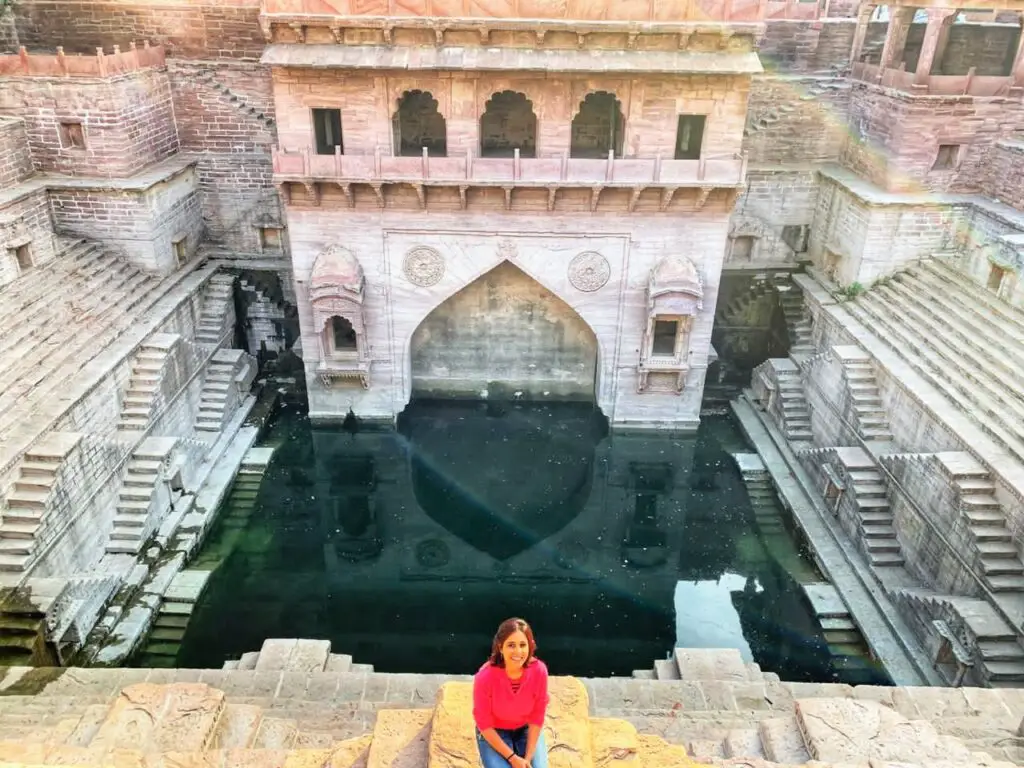
Stepwells are wells where you can collect water by descending steps instead of using a rope. It reduces effort, keeps water clean all year round due to the stone padding around the well. The wells are like inverted temples usually with beautiful carvings and architecture.
Due to drought curse, many stepwells had been built in Jodhpur. Of these only a handful of them still exist.
Toorji ka jhalra is amongst the very few of them and was built in 1740s. Until 2014, the well was neglected and was being treated as a dumping ground. It was in ruins and covered with waste till ground level.
In 2015, JDH which is an urban regeneration project took up the responsibility to restore this well to its former glory. Today this is a beautiful spot and acts as a swimming pool for the locals to beat the scorching summer heat.
Final Words
I was in this city for only one day which is definitely not enough. For me, it was a stop over on my way from Delhi to Jaisalmer. Would definitely want to go back there.
Did any of these facts shock you or convince you to take a trip to Jodhpur? Do let me know.

A great blog, Priyanka. Well written! keep it up. We need more bloggers like you especially at this time when the world is full of misinformation.
Thanks a lot Kanishka!
Well written priyanka. 👏
Thank you so much!